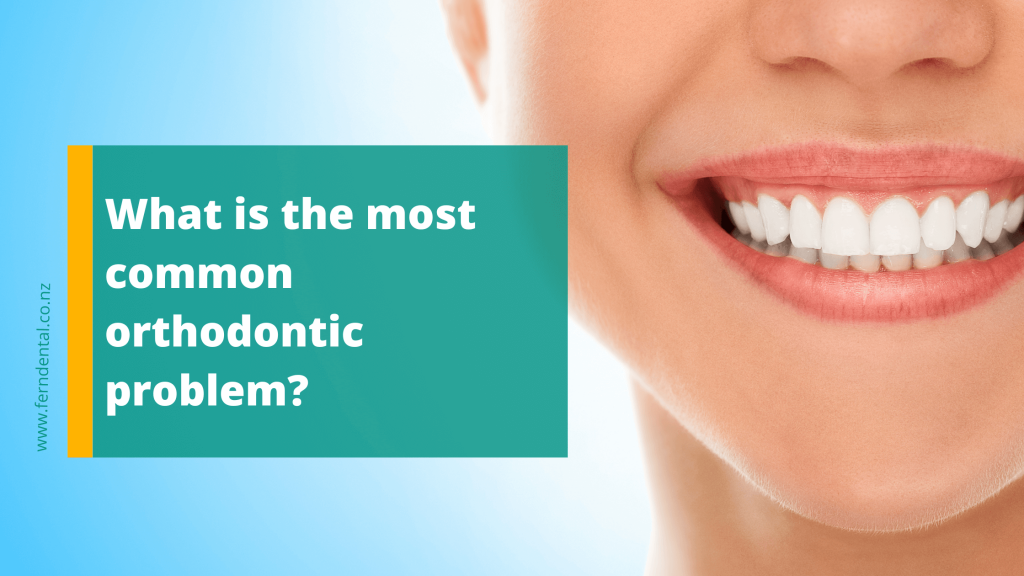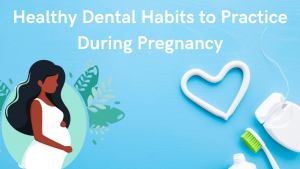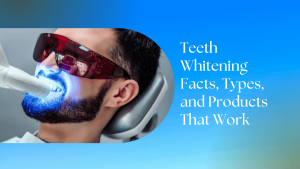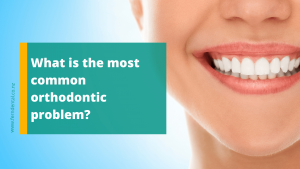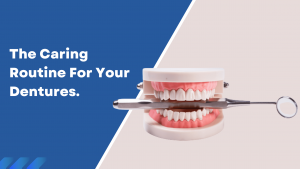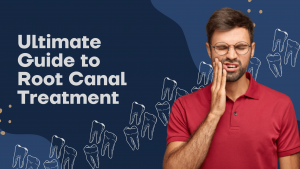Orthodontic treatment plays a vital role in treating various orthodontic problems, from malocclusions (poor bites) to jaw abnormalities. Orthodontic therapy comes with a slew of advantages. An orthodontist may help you achieve a beautiful and healthy smile by minimizing the risk of damage to teeth that might otherwise protrude, optimizing the wear pattern on teeth and distributing force more evenly, enhancing the cleaning capabilities of teeth, and more.
Occlusion refers to the way your teeth align and fit together when you bite down. The upper teeth are typically over the lower teeth, and the molars are aligned on top of each other when your jaw is closed. Teeth, on the other hand, don’t always line up perfectly. Dental malocclusion is a kind of misalignment that may have significant ramifications for one’s dental health. Malocclusion of the teeth is the cause of the following issues.
Some Common Orthodontic Problems That Require the Attention of an Orthodontic Specialist
Crowding
One of the most prevalent orthodontic problems is a crowded set of teeth. Crowding is basically the result of too little room in the jaws to fit all of the teeth. Apart from potentially not being confident and feeling self-conscious about ones, people with crowded teeth may also suffer from uneven wear, tear, and gum issues, all because of the difficulty in keeping overlapping teeth clean as compared to straight teeth.
Spacing
Spaces or gaps must be present between the teeth anywhere in the mouth. There are a variety of factors that might lead to a gap in the mouth. For example, a mismatch between the size of a patient’s jaw bone and their teeth may be hereditary. It might also be that either a tooth is lost or it is too little to leave a gap between the teeth next to it. Thumb or finger sucking or tongue pushing, in which the tongue pushes forward on the teeth, are more practices that might result in spaces between teeth.
S[aces between the two upper front teeth are referred to as diastema. An enlarged labial frenum, the piece of tissue that stretches from the inside of the upper lip to the gums above the top front teeth, is often to blame for this problem.
Bite with an Open Mouth
Having an open bite is an condition falling in the category of orthodontic problems in which the top and lower teeth do not meet when the mouth is closed. Although a problem with the jawbones may cause open bites, they are most often induced by patient conduct. Oftentimes, an open bite is triggered by habits such as sucking on one’s thumb or finger, tongue pushing and biting on foreign items like pencil ends.
Bite That Really Goes Deep Within
When the upper front teeth almost completely overlap the lower front teeth in a vertical orientation, this is known as an overbite or “deep bite.” Overbites are often inherited through genes and may be traced back to abnormalities in the growth of the jaws.
Overjet
An overjet or overbite develops when the top and bottom teeth overlap excessively horizontally (front-to-back) between them. The most prevalent reason for this is a skeletal imbalance in which the upper jaw protrudes more forward than the lower. If the teeth are crooked in the jaw because of a habit like thumb-sucking or merely the way they grew in, the way teeth are positioned might also be a factor in the occurrence of overjet (genetics).
Underbite
When the lower tooth and jaw project over the upper teeth, you have an underbite. In most cases, genetics or inheritance is to blame, making it a particularly challenging biting issue to resolve.
Hypodontia
One or more baby or permanent teeth do not form due to a genetic or inherited disorder known as hypodontia. Teeth on each side of the upper lateral incisors are often missing as a result of genetics. As a consequence, patients often complain of an unsightly “aesthetic zone” at the front of their mouths as a result of the procedure.
Dental Afflictions
These are the type of teeth that do not erupt into the mouth as they should and gets stuck into the bone. It is common for the upper permanent canines to get impacted in the mouth, which in many circumstances necessitates orthodontic treatment to get to their proper position in the mouth. Too much crowding or the early loss of a baby tooth without enough space management may lead to impacted teeth, though they generally are the result of hereditary.
Make an Appointment to See How Fern Dental Orthodontics Can Improve Your Smile Today!
The treatment of malocclusion of teeth in youngsters is usually corrects the problem successfully. Early therapy in children may shorten the length of treatment and save money. Treating malocclusion early will lead to a better outcome and a quicker recovery time. Orthodontic therapy may solve all of the aforementioned orthodontic problems. A free consultation is available if you notice any of these problems in your or your child’s mouth, simply contact us to schedule a convenient time. We at Fern Dental can’t wait to see you around and are looking forward to serving you!

